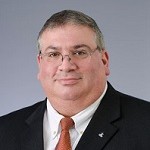By Anthony S. Mangeri, MPA, CPM, CEM, Faculty Member, Fire Science Management at American Military University
Evidence-based decision making and emergency operations have arrived in the fire service. As with many professions, future educational needs must take into account the transition to evidence-based operations.
It has long been said that the fire service is proudly steeped in tradition unhampered by progress. However, it is time for change; research is changing the ways emergency services processes the scene of a crisis and how fire and all emergency services respond. Fire professionals will need to understand emerging research. Education will require a strong focus and understanding of the natural sciences, mathematics, and technology.
[Related Article: Rank and File: Getting the Attitude Right from the Start]
The National Fire Protection Association (NFPA) 921: Guide for Fire and Explosion Investigations defines fire as, “A rapid oxidation process, which is a chemical reaction resulting in the evolution of light and heat in varying intensities.” While chemistry explains the process that causes the rapid release of heat and energy, physics provides insight into how these processes interact with other natural elements.
Evidence-based fire operations require firefighters and other fire service personnel to have a strong understanding of math and science. Improving science literacy of firefighters will help ensure that they have the basic knowledge to enhance critical thinking on the fireground.
Fire dynamics is the study of the science behind the behavior of fire. It is a combination of several disciplines, including chemistry, fluid mechanics, aerodynamics, physics, construction materials, and structural design. Chemistry and physics are relatively similar in that they both study matter and energy and how they interact. Understanding basic science results in better situational awareness and improved risk avoidance.
Those seeking to better understand the behavior of fire will also need to have a general understanding of physics. Physics research includes an analysis of mechanics and radiation of energy, such as heat, light, sound, and electricity.
The branch of physics that is relevant to the fire service is thermodynamics. Thermodynamics focuses on heat and radiated energy, such as temperature. As with all sciences, research is based on observation, computer modeling, and the development of experiments to better understand how fire and energy behave and how they are influenced by suppression operations.
The National Fire Science Programs Committee’s Fire & Emergency Services Higher Education (FESHE) program model curriculum identifies core courses that should be offered as part of an associate and bachelor’s degree program in fire-related specialties. The model curriculum does not include studies in natural sciences or math. These elements are usually part of a degree program’s general education requirements.
In short, having the proper education and knowledge raises the capacity of fire service personnel to provide service within the community and to address dynamic and ever-changing threats within our community. Fire science curriculums, for new firefighters as well as for continuing education of fire service personnel, should incorporate science courses to introduce fire science students to the basic concepts of matter and energy.

